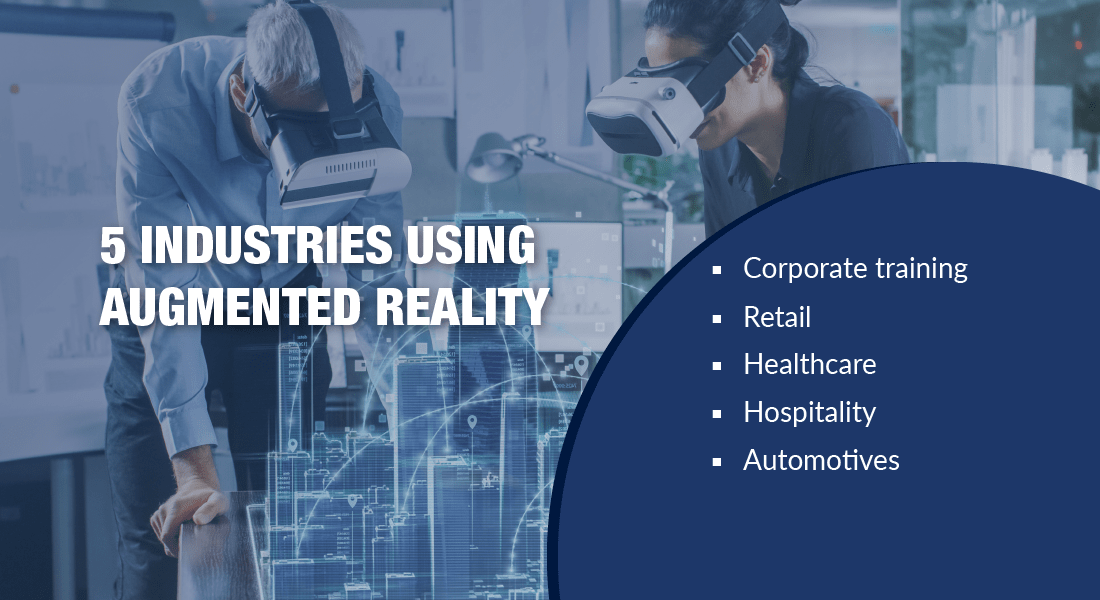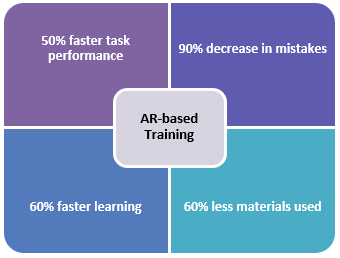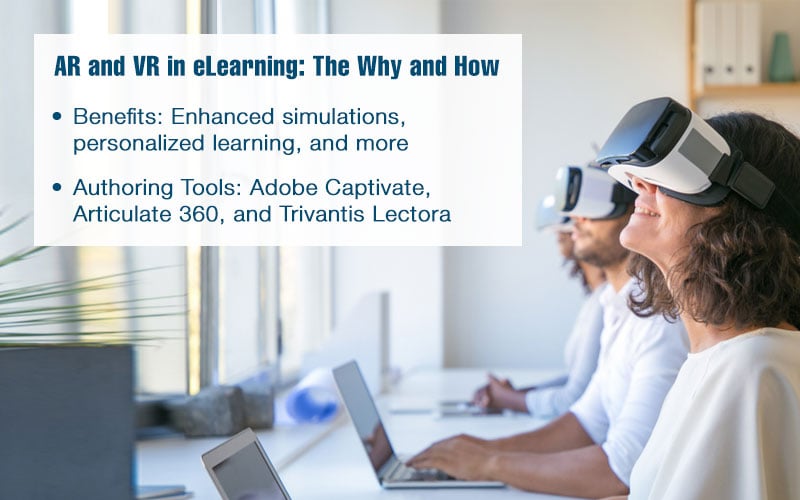AR Trends: What’s in Store for Different Industries?

With 2020 almost over, how did Augmented Reality (AR) fare this year?
Despite a negative growth rate (-2.08%) in 2020 (due to the COVID-19 outbreak), AR is now at 96 billion 1 in the global market. The market is expected to grow at a CAGR of 44.8% and reach $148.72 billion in 2023.
The Impact of AR on Different Industries
- Corporate Training – Enhanced experiential learning
- Retail and Shopping – New customer experience
- Healthcare – Ability to see ‘under the skin of patient’,
- Travel and Tourism – Tour hotel and rooms, 360-degree view of menus
- Automotive – Track driver’s line of sight, heads-up display to overlay information about the road ahead
A global pandemic and market slowdown could not stop AR from marking an uptick in innovations and trends. AR as a technology has been consistently breaking grounds, not just in the entertainment and gaming sectors (Pokémon GO, Ingress, Jurassic World Alive, and more…….), but in various other industries – corporate training, retail and shopping, healthcare, tourism, and automotive.
How? We shall find out in this blog.
What is Augmented Reality, by the way?
AR is a technology that:
- Adds to reality or
- Augments reality
In simple terms, it uses your mobile device to blend digital elements – images, text, videos, and 3D models – with real world objects. For instance, Snapchat or Instagram filters that allow you to insert a dog’s ears or freckles on your picture.
AR applications can be used through smartphones, tablets, smart glasses, or even specialized headsets (such as Microsoft’s HoloLens 2).
Get the recording of this webinar that discusses the ‘real’ eLearning trends for 2020.
The Impact of Augmented Reality on Different Industries
1. Corporate Training
AR can be used for corporate training in many ways but its USP is effective experiential learning. From training on how to fix a complicated piece of equipment to safety procedures, AR is revolutionizing the way organizations train their employees.
Instead of going through complex handbooks or hypothetical scenarios, studying diagrams, memorizing data, or sitting through hour-long courses, AR allows employees to learn through 3D visualizations and constantly updated information (about specific tasks).
For instance:
In the manufacturing sector, learners can stand in front of a machine with their AR-enabled devices (smartphones or tablets) and watch as an app places the technical information of the physical object in 3D. This allows them to explore each feature of the machine in real-time with unmatched accuracy.
In the aviation sector, AR can be used to train employees on how to install or fix electrical wiring on an aircraft. In fact, Boeing 3 tested AR in their factory – real-time, hands-free and highly interactive 3D diagrams of wiring – right in front of their eyes. Before AR, technicians had to physically look at and interpret 2D drawings, and then construct the image in their minds before attempting the wiring from their memory.
In heavy duty industries, AR comes in very handy for safety training where skipping a step or using wrong procedures on a machine can lead to potentially serious consequences. With AR smart glasses (Microsoft HoloLens, Google Glass), learners can now resolve technical issues on real machines with visual guidance, hands-free.

Source: REFLEKT
2. Retail and Shopping
Retail and shopping are all set to adopt more of AR-based technologies to offer new consumer experiences in a market that’s currently dominated by online sales. Brands are now using AR to encourage consumers to buy from shops and retail outlets, allowing them to explore products virtually (e.g. clothes) without actually trying them on physically.
Let’s look at how some big names in the industry are starting to use AR to provide an all-new retail and shopping experience.
Clothing brands like Lacoste, American Apparel, and Uniqlo have opened showrooms with virtual fitting rooms that offer the ‘try-before-you-buy’ option. In addition, AR is going to be adopted by lifestyle, makeup (L’Oréal’s chose ‘Holographic’ as the hair color of 2020), and fashion brands in the form of virtual assistants offering personalized advice to customers.
IKEA’s Place app allows customers to place IKEA’s furniture products virtually in their space, allowing them to ‘see’ how the products will look in their homes.
Harley Davidson has been leveraging an AR app that customers can use in-store. It offers a virtual experience where customers can design a custom bike by ‘trying out’ different body types, seats, colors, and other options.
Insights
- According to Gartner 4, at least 100 million consumers were expected to use AR-enabled shopping technologies (online and in-store) in 2020, making it the hottest retail trend this year.
- BRP5 reports that 50% of consumers are more likely to shop if the retailer offered augmented or virtual reality experiences.
3. Healthcare
From handling complex machineries to performing surgeries, AR technologies have the potential of transforming medical training. For starters, medical professionals can learn human anatomy and the functions of the human body with AR, making it possible for them to “see under the skin’ of their patients.
AR offers the ability to visualize and interact with 3D representations of body parts (such as bones, organs, muscles), without having to cut open a body. AR technologies can be used by doctors – both in the operation theatre or in training – to get risk alerts while working.
Let’s look at some examples of how AR is and will be transforming the healthcare sector.
At a very basic level, AR can help determine exactly where to make incisions and injections, avoiding accidental needle sticks. This can be crucial during medical emergencies where AR can display life-saving information (vein visualization) to AR-equipped paramedics.
Surgeons at the Imperial College London and St. Mary’s Hospital have used Microsoft’s HoloLens 6 AR glasses during surgeries. HoloLens allows surgeons to overlay 3D digital models of previously done CT scans onto a patient’s limb during reconstructive surgery to ‘see’ the bones and the course of blood vessels very accurately. The ability to peer inside the body before operating is certainly crucial to the success of a surgical procedure.
Doctors at the University of Maryland’s Medical 7 School have been using AR headsets that display ultrasound information directly on a patient’s body. This offers a unified view, letting the doctors focus on the patient instead of looking at both the screen and the patient.
AR certainly presents a historic way of revolutionizing medicine and patient care.
Insight
Augmented Reality (AR) technology accounts for a large market share and will grow at 38.38% annually over the forecast years, faster than the Virtual Reality (VR) technology in healthcare domain. (Business Wire)
4. Travel and Tourism
Tourism is one of the many sectors which needs to keep pace with new technology and step up its game. Especially now, when most of the travelers are millennials. AR apps have been deemed a game-changer in the way people search and decide on accommodation, transport, food/catering, and sightseeing – the four pillars of tourism.
Let’s look at how AR can improve each of these.
Accommodation: AR can be used to create hotel and room tours, including detailed information on facilities and prices. This is certainly a great way to advertise and immerse potential customers into exploring hotel services. For instance, the Hub Hotel from Premier Inn in the UK has installed interactive wall maps in its rooms that guests can point their devices at (phones or tablets) to find the nearest sightseeing locations.
Transport: With an AR-enabled travel app, users just need to point at transportation objects (road maps, buses, taxis) to get routes, directions, next stops and more! For instance, Tunnel Vision 8 can transform any New York subway map into an interactive one through data. In addition, switching to any language is just a matter of a single click.
Restaurants: AR apps (such as Kabaq 9) offer interactive 360 degree views of menu dishes, including portion size and ingredients. AR apps also help with smart navigation, offering information on nearby restaurants and cafes.
Sightseeing: AR solutions can transform a boring city tour into something extraordinary. People can go back in time, explore the evolution of landmarks, interact with 3D models of structures, and get virtual tour guides (helping at each step). The National Museum of Natural History has launched their AR app (Skin and Bones 10) that offers live representations of extinct animals from their skeletons in the museum. (Doesn’t museum touring seem like a fun thing to do now?)
5. Automotive
Even after the regulatory constraints on fully automated driving, AR in automobiles has been picked up by several car manufacturers already – BMW, Jaguar, Chevrolet, Mercedes, Volvo, Toyota, and Lexus, to name a few. From tracking the driver’s line of sight to heads-up displays, AR solutions are rapidly gaining popularity.
Augmented reality can improve safety by overlaying safety instructions to the driver within his line of sight. This essentially means drivers need not look down at their phones or the dashboard for driving information; it will be available on the heads-up display or projected on the road ahead in the driver’s sight.
Apart from helping with navigation (a widely used feature), AR solutions help by cautioning drivers about the hazards on the road or other important notifications (roadblock, steep turn). In fact, Nissan’s Invisible-to-Visible 11 technology will offer the option of having an augmented virtual co-driver who’ll answer your questions and keep you updated with information about the road.
These are just a few of the many advances happening in automotive AR. Tech pundits predict a lot more in the next few years!
Wrapping it Up!
While the gaming industry will continue to rule AR in terms of adoption and revenue, other industries such as healthcare and engineering are expected to pick up.
Did I miss any other industry that has been leveraging AR? Do let me know what you think in the Comments section below!
References
2 https://www.lifewire.com/microsoft-hololens-2-explained-4691204
4 https://cstoredecisions.com/2018/11/01/virtual-and-augmented-reality-enter-retailers/
7http://www.tunnelvisionapp.com/





